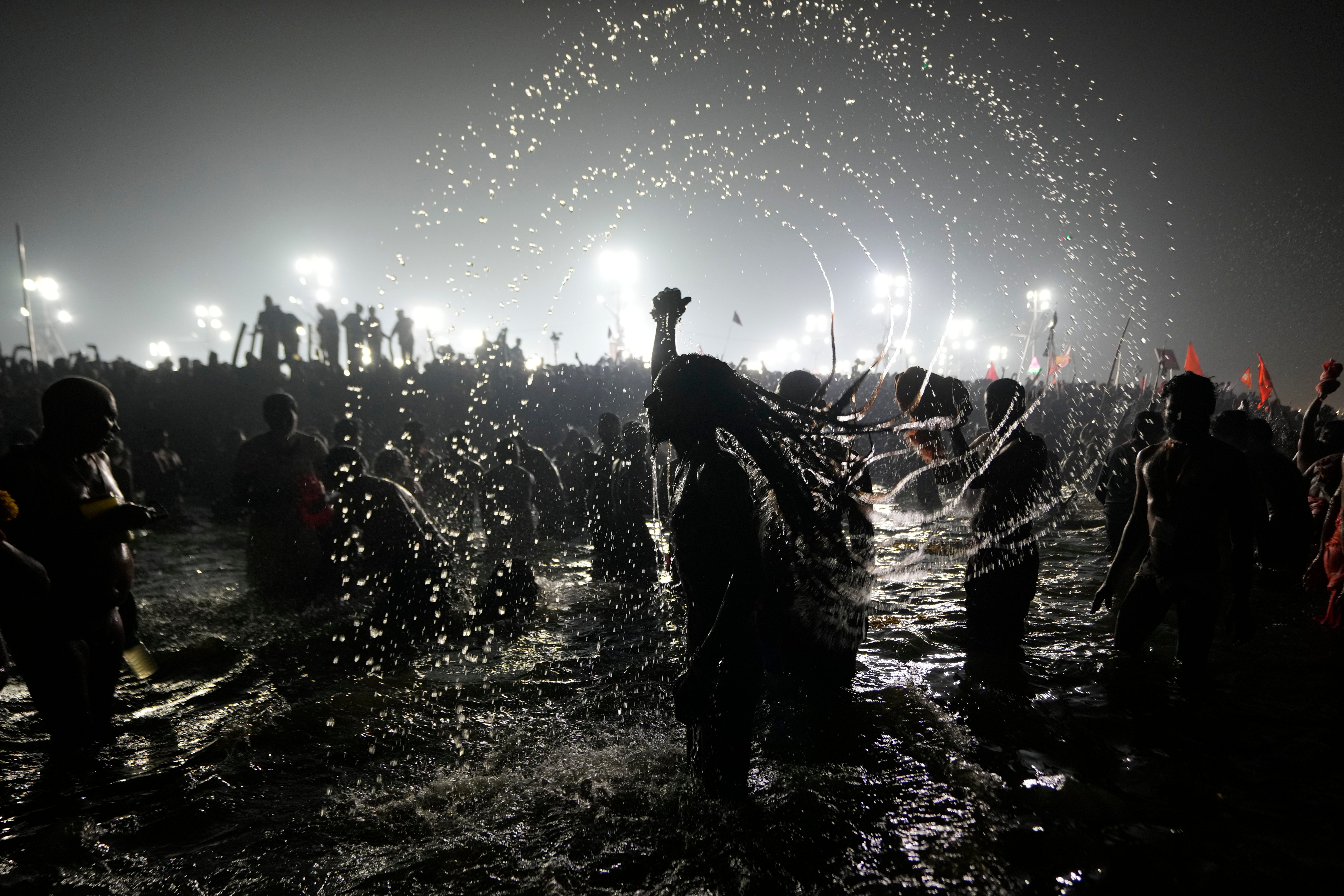Hindu ascetic rising from the river after a holy dip is emblematic of Maha Kumbh festival in India

The man appears in a silhouette after rising from the river. His dreadlocked hair is flicked backwards, sending a stream of water in a clockwise swirl. Others surround him, with some holding the saffron flag of Hinduism, all repeating a centuries-old ritual that Hindus believe cleanses them of their sins and releases them from the cycle of rebirth.
The photo of a Naga Sadhu — a Hindu ascetic — at the confluence of the Ganges, Yamuna and mythical Saraswati rivers in the northern city of Prayagraj, is emblematic of the ongoing Maha Kumbh festival, the largest religious congregation on Earth. Here, millions Hindus have been taking dips in freezing water at the confluence of rivers — two worldly and one mythical — to attain salvation.
Bathing at the festival, which began on Jan. 13 and will conclude on Feb. 26, takes place every day, but on the most auspicious dates, Hindu ascetics charge toward the holy rivers at dawn. They are part of religious orders that were once mercenary armies who generally revere Hinduism’s Lord Shiva.
The festival has its roots in a Hindu tradition that says the god Vishnu wrested a golden pitcher containing the nectar of immortality from demons. Hindus believe that a few drops fell in the cities of Prayagraj, Nasik, Ujjain and Haridwar — the four places where the Kumbh festival has been held in rotation for centuries.
Nearly 400 million people are expected to participate in this year’s festival.